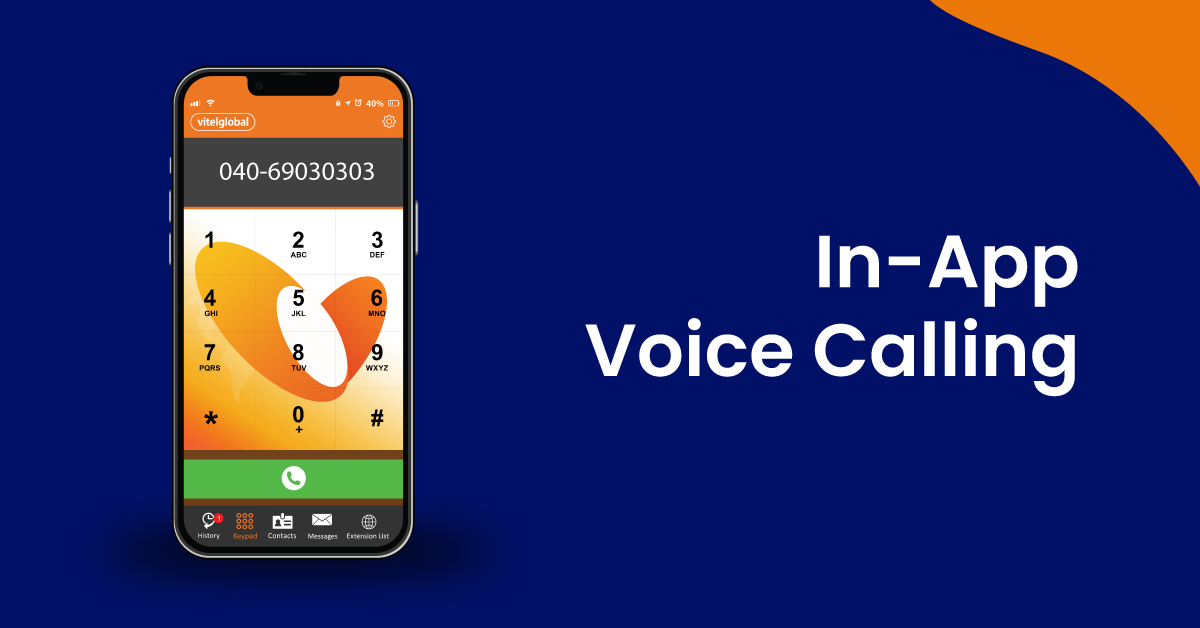The ability to easily connect via our mobile phones is necessary, whether for work or personal use. But one difficult challenge that a lot of us face is the hated dropped call. Imagine that you are engaged in a meaningful conversation when it is suddenly interrupted. We’ve all encountered this situation, which leaves us wondering about the underlying reasons and more importantly workable solutions to this annoying problem.
What are Dropped Calls?
The term “dropped call,” which is mostly used in the telecommunications sector, refers to an unintentional termination of an ongoing phone call for technical or other reasons. Since nobody on the call started this disconnection, it comes as an unexpected and frequently annoying surprise.
To get a better understanding of this, picture yourself deep in conversation with a friend over the phone about your weekend plans. The call suddenly ends without any notice or action on your part. There’s nothing but silence as you clutch an unplugged phone. the using of the term A Call Disconnection is to describe this sudden end to the call.
What are the Common Problems behind Dropped Calls?
Call drops can be caused by a variety of factors, including weak signal strength, interference, network congestion, and technical issues. In these situations, the phone system experiences difficulty keeping the callers connected, which leads to a sudden call termination. Let’s look at the main reasons why VoIP calls are disconnected.
Not Enough Network Capability
VoIP calls that are disconnected occur when your internet speed is insufficient, particularly when using voice and video calling. This may cause data loss and network congestion, causing your calls to sound choppy or end altogether. Call drops can also occur when your network is overloaded or fails to prioritize calls. Weak signals or crowded areas can cause mobile calls to be dropped; the same is true for weak or intermittent Wi-Fi signals.
Signal Loss
VoIP calls convert your voice into digital data that passes instantly over the internet. It is therefore similar to losing bars during a regular call if the signal becomes weaker or disappears. Delays and dropout rates may arise from this. Additionally, you may completely lose the call if the signal declines. VoIP cannot operate properly without a reliable and constant internet connection.
Maximum Connection Time
VoIP service providers occasionally impose time limits on each call session. These time limits are usually chosen by the user datagram protocol (UDP) timeout value. Providers impose this cap or limit to shield customers from disproportionate bill costs and to prevent queue jams.
Your call may end suddenly if it lasts longer than the allotted time. Session initiation protocol (SIP) timers that are malfunctioning or incorrectly configured on your router can also cause issues.
Audio Identification Issues
Call terminations may result from improper transmission or reception of your voice due to system or microphone malfunctions. This is similar to when someone suddenly loses their ability to hear you during a regular phone call because of problems with the microphone.
For example, if your microphone isn’t working properly, your voice might not be heard or transmitted. Additionally, the VoIP phone systems might consider a call that has failed and drop it if audio is not detected.
The Problem of Software or Hardware
Call drops may occur if the device you’re using such as a computer or phone has technical issues. Similar to this, a malfunctioning or physically damaged networking device, like a router, can weaken your internet and make it unsuitable for crystal-clear phone calls. The use of out-of-date software is equivalent.
Reduce Call Drops with These Powerful Techniques
We have you covered when it comes to solving the annoying issue of dropped VoIP calls. You can fix broken devices and maximize your VoIP network settings there are feasible options that can have a significant impact.
Change the Settings on Your Device
Call drops may increase in frequency if your date and time settings are not in sync with your local time zone or if deactivate your Caller ID feature. If you’re experiencing problems, check on these two.
Lengthen the Session
Adjust the internet settings to continue your calls uninterrupted for a longer period. Check the VoIP settings to extend the duration of a session. Additionally, you can ask your internet telephony service provider (ITSP) to remove or increase the duration of each call session’s time limit. Changing these settings can be very beneficial because if the timer goes off, the system will assume that your call has ended and the session will end.
Speak With VoIP and Internet Service Providers
Finally, get in touch with your internet service provider (ISP) if you’ve attempted the aforementioned solutions and the call drops continue. To make sure your internet connection is reliable and appropriate for VoIP calls, they can perform diagnostics. Your call quality may be impacted by underlying network problems, which your ISP can assist in resolving.
Boost Internet Speed, Signal Reception, and Bandwidth on the Network
To check your internet capabilities, start by using an internet speed communication tool for business. Verify the jitter times and upload and download speeds. For reliable connectivity, move to an Ethernet or wired connection. A faster internet plan might be worth upgrading for better call quality. Move your router to a more central location in your house to maximize your Wi-Fi signal.
Additionally, you should think about closing or disabling any unused Business phone app that might be using up too much internet bandwidth or interfering with phone calls. Additionally giving traffic on your network priority by utilizing VoIP QoS settings.
The Best Strategies to Prevent the Call Dropping Issues
Experiencing call interruption can be a major inconvenience. The frustration of a sudden interruption during an important conversation is something we’ve all encountered. To enhance the reliability of your phone calls and minimize the chances of call-dropping issues, consider incorporating the following best strategies into your communication habits.
Optimize Your Network Settings
Make sure the network mode on your device is the most appropriate one. Experiment with 2G, 3G, and 4G settings to find the balance between coverage and speed. Additionally, enable Wi-Fi calling when possible to harness a more stable connection.
Prevent Interference and Blockages
Your signal may be weakened by electronic interference and physical obstructions. To reduce the effect of walls and buildings, try to make phone calls in open areas. When on a call, keep your phone away from electronics like cordless phones and routers.
Update Software Frequently
Update the apps and operating system on your phone. Developers regularly release updates to address bugs and enhance functionality. Updating software regularly can help make calling easier.
Turn off Your Device
A quick restart will have a great effect. It assists in system refreshing and removes any transient issues that might be interfering with your phone’s connectivity. Develop the habit of periodically restarting your device to keep it operating at peak efficiency.
Speak with your carrier
Get in touch with customer service at your mobile carrier if you continue to have problems with calls dropping. They can look for local issues or network outages in your area. Issues with carriers can occasionally be the main reason why calls are broken.
Examine Other Communication Approaches
It can be beneficial to plan calls for off-peak times or to use other forms of communication, such as texting or instant messaging, in places where network congestion is common. This reduces the possibility of missed calls during periods of high usage.
Evaluate Your SIM Card
A damaged or outdated SIM card can contribute to connectivity problems. Visit your carrier’s store to get a new SIM card if needed. Ensuring that your SIM card is in good condition is a simple yet often overlooked solution.
Conclusion
Undoubtedly, dropped calls can be very annoying, but you can greatly enhance your calling experience by learning about typical problems and putting workable fixes in place. There’s always a way to reduce the disruption that calls disconnected causes in your daily life, whether it’s through network optimization, device troubleshooting, or exploring other options for communication. Make missed calls a thing of the past by remaining informed and connected.
FAQs
Why Do Dropped Calls happen, and what are the Common Reasons behind Them?
Dropped calls can occur due to various reasons, but some common culprits include poor network coverage or signal strength, physical obstructions, interference, and device-related issues. Weak signals, network congestion, and outdated software can contribute to the unexpected termination of a call. Identifying these factors can help in implementing practical solutions to minimize call-disconnected occurrences.
How Can I Improve My Network Connection to Reduce the Chances of Dropped Calls?
To enhance your network connection and reduce the likelihood of dropped calls, consider the following steps:
Optimize Network Settings: Experiment with different network modes (2G, 3G, 4G) to find the best balance between coverage and speed.
Enable Wi-Fi Calling: Utilize Wi-Fi calling when available to improve connectivity, especially in areas with weak cellular signals.
Avoid Obstructions: Make calls in open spaces to minimize the impact of physical barriers like buildings and walls.
Limit Interference: Keep your phone away from electronic devices that may interfere with the signal, such as routers and cordless phones.
What Should I Do if I Continue to Experience Dropped Calls Despite Trying Common Solutions?
If dropped calls persist, it’s advisable to take the following steps:
Contact Your Carrier: Reach out to your mobile carrier’s customer support to check for network outages or specific issues in your area.
Update Software: Ensure that your phone’s operating system and apps are up to date, as developers often release updates to address bugs and improve performance.
Consider SIM Card Evaluation: Visit your carrier’s store to assess the condition of your SIM card, as a damaged or outdated card can contribute to connectivity problems.
Explore Alternative Communication Methods: Schedule calls during off-peak hours or use text messages or instant messaging in areas prone to network congestion.


